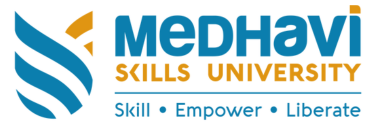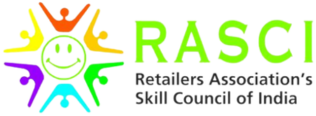Building upon the foundational insights from How Visual Patterns Enhance Decision-Making Skills, this article explores how recognizing and harnessing visual patterns can catalyze creativity and innovation. While decision-making benefits from pattern recognition’s speed and efficiency, creative problem solving pushes these skills further—transforming familiar patterns into sources of novel ideas and breakthroughs.
1. Introduction: From Decision-Making to Creative Problem Solving through Visual Patterns
Visual patterns serve as cognitive shortcuts that enable rapid decisions, such as recognizing a familiar face or quickly assessing a data trend. However, their role extends beyond immediate judgments. When we shift focus from utilitarian recognition to generative interpretation, visual patterns become tools for fostering innovative thinking. By examining patterns deeply, we open pathways to generate new ideas, solve complex problems, and drive creative breakthroughs.
Contents
Cognitive Processes Behind Visual Pattern-Based Creativity
Techniques for Harnessing Visual Patterns to Enhance Creativity
Case Studies: Visual Patterns as Catalysts for Innovation
Bridging the Gap: From Creative Solutions Back to Decision-Making
Practical Applications and Future Directions
Conclusion
2. Understanding the Intersection of Visual Patterns and Creativity
Recognizing visual patterns not only aids in quick decision-making but also acts as a catalyst for creative insights. When we identify recurring motifs or sequences—such as geometric arrangements, color schemes, or spatial configurations—we stimulate divergent thinking. This process involves exploring multiple possibilities, connecting seemingly unrelated concepts, and generating innovative ideas.
A crucial distinction exists between utilitarian pattern recognition—focused on efficiency and accuracy—and generative pattern recognition, which emphasizes creating new associations. For example, designers analyzing visual motifs in nature may derive inspiration for innovative product designs, while scientists may detect patterns in data that lead to groundbreaking hypotheses.
| Type of Pattern Recognition | Focus | Outcome |
|---|---|---|
| Utilitarian | Speed & Efficiency | Quick Decisions |
| Generative | Innovation & Creativity | New Ideas & Concepts |
Such generative recognition is exemplified by artists who observe abstract patterns and reinterpret them into new visual compositions, or entrepreneurs who see emerging trends in consumer behavior and develop innovative products accordingly.
3. Cognitive Processes Behind Visual Pattern-Based Creativity
The brain’s ability to recognize and manipulate visual patterns is central to divergent thinking—the core of creative problem solving. Neural networks in areas such as the visual cortex and prefrontal cortex facilitate the association between disparate concepts, enabling us to see connections that others might overlook.
Research indicates that high visual pattern fluency correlates with enhanced creative capacity. For instance, individuals skilled at identifying intricate patterns tend to excel in reframing problems, viewing challenges from multiple perspectives, and generating innovative solutions.
“Pattern fluency not only accelerates recognition but fundamentally expands the horizon of creative possibilities, fostering a mindset open to novel ideas.”
4. Techniques for Harnessing Visual Patterns to Enhance Creativity
Implementing practical strategies can significantly improve one’s capacity to leverage visual patterns for creative outcomes. Some effective techniques include:
- Pattern-Based Brainstorming: Using visual prompts or pattern cards to generate ideas by making unexpected connections.
- Pattern Mapping & Visualization Tools: Employing software like mind-mapping applications or visual diagramming to identify and explore recurring motifs within complex data sets.
- Pattern Recognition Exercises: Regularly practicing exercises such as visual puzzles, abstract art interpretation, or data pattern analysis to improve fluency in spotting meaningful patterns.
For example, designers might use pattern mapping to explore variations in visual motifs, leading to innovative branding concepts. Similarly, data scientists may employ pattern visualization tools to uncover hidden relationships in large datasets that inspire new research directions.
5. Case Studies: Visual Patterns as Catalysts for Innovation
Real-world examples illustrate how pattern recognition has driven significant breakthroughs across disciplines:
Design Thinking and Pattern Identification
In design thinking projects, teams analyze visual trends—such as color palettes, shape combinations, or material textures—to develop innovative products. For instance, Airbnb’s use of pattern analysis in customer data led to personalized experience offerings, boosting user engagement and satisfaction.
Scientific Breakthroughs Driven by Pattern Recognition
The discovery of the structure of DNA by Watson and Crick exemplifies pattern recognition’s power. Their ability to interpret base pairing patterns in genetic data paved the way for revolutionary advances in biology and medicine.
Business Strategy and Visual Data
Organizations like Amazon utilize visual data analysis to identify purchasing patterns, enabling targeted marketing and inventory management. Such pattern-driven insights foster strategic innovations that sustain competitive advantage.
6. Bridging the Gap: From Creative Solutions Back to Decision-Making
Creative problem solving enriches decision-making by expanding the range of options and perspectives considered. Techniques like lateral thinking and scenario planning, often rooted in visual pattern exploration, refine our ability to evaluate complex situations comprehensively.
Furthermore, developing visual pattern literacy—understanding how data and images relate—enables decision-makers to critically assess innovative ideas. Integrating these creative insights into structured frameworks, such as decision matrices or SWOT analyses, ensures that novel solutions are evaluated rigorously and systematically.
“Creative insights, when combined with analytical frameworks, lead to more robust and innovative decisions—bridging intuition with strategy.”
7. Practical Applications and Future Directions
Emerging tools like AI-driven pattern recognition software, augmented reality visualizations, and interactive data dashboards are transforming how we harness visual patterns for creativity. These technologies facilitate real-time pattern identification, enabling rapid prototyping and iterative innovation.
Organizations fostering a culture of pattern-aware thinking often implement training programs, workshops, and collaborative environments that emphasize visual literacy. This shift encourages employees at all levels to see beyond surface data, cultivating a mindset open to continuous exploration and inventive solutions.
Research continues to explore the neural mechanisms linking visual pattern cognition with creative problem solving, promising future advances in neurotechnology and cognitive training. Such insights could lead to personalized methods for enhancing creative capacity through pattern recognition exercises tailored to individual neural profiles.
8. Conclusion: Elevating Decision-Making Through Creative Use of Visual Patterns
As demonstrated, the synergy between visual patterns, creativity, and decision-making is profound. Recognizing patterns enables not only swift judgments but also the generation of innovative solutions that can redefine challenges into opportunities. By deepening our visual pattern literacy and applying targeted techniques, we unlock new dimensions of problem-solving potential.
Encouraging ongoing exploration and mastery of visual pattern applications ensures that individuals and organizations remain adaptive, inventive, and competitive in an ever-evolving landscape. The future of creative problem solving lies in our ability to see beyond the obvious and harness the power of patterns to spark meaningful innovation.






